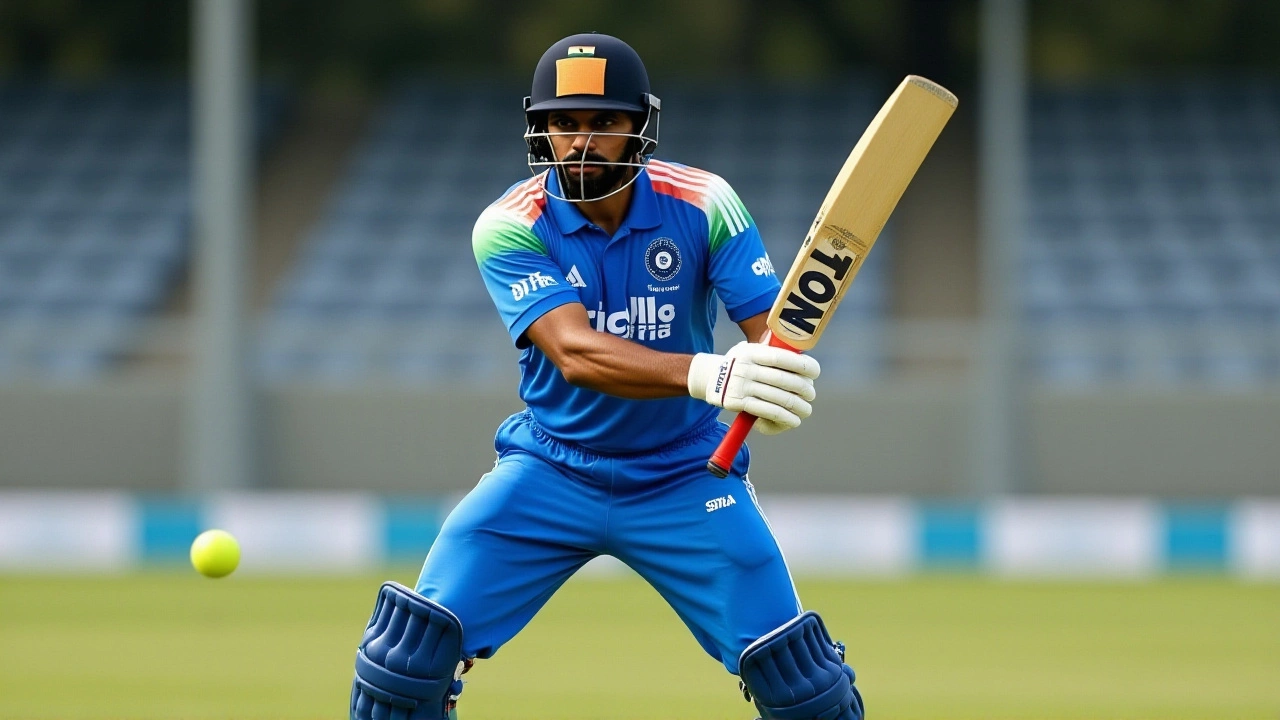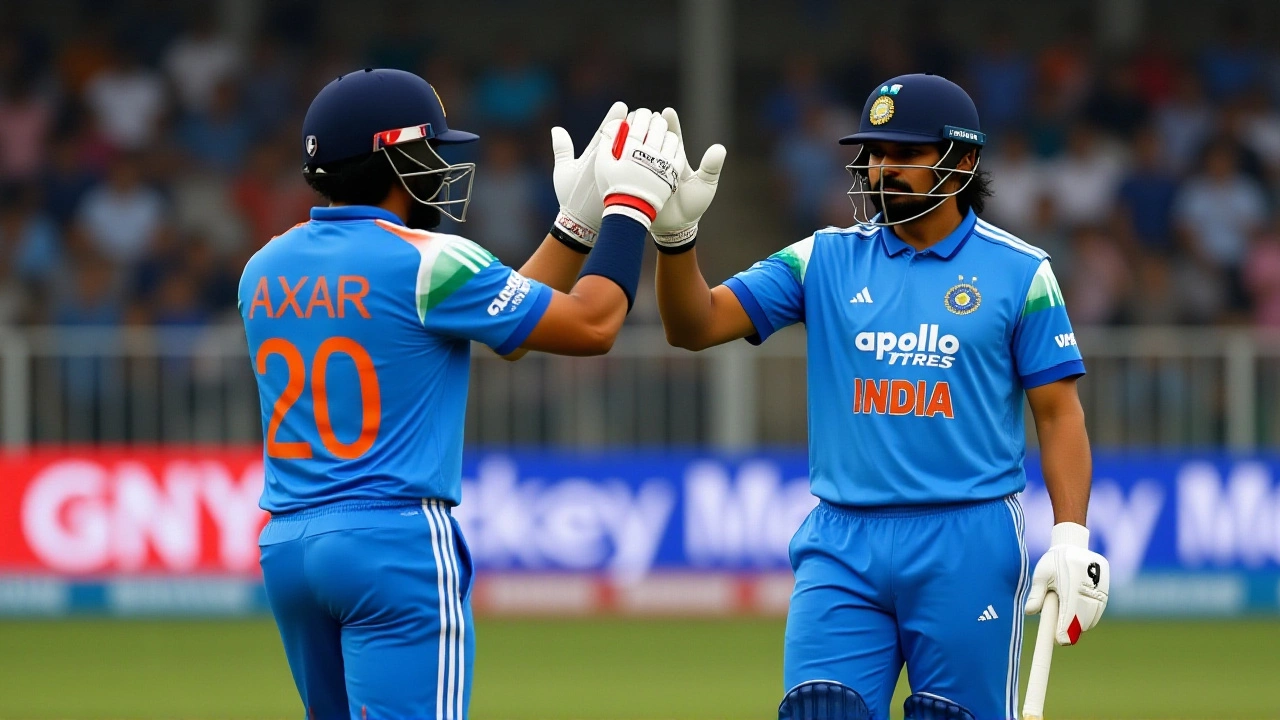When KL Rahul stepped onto the field as India’s stand-in captain for the upcoming ODI series against the South African national cricket team (Proteas), it wasn’t just a leadership change—it was a moment of quiet resilience. The Board of Control for Cricket in India (BCCI) announced the 15-man squad on November 23, 2025, just days after injuries sidelined both Shubman Gill and Shreyas Iyer, leaving the team’s ODI structure in flux. The series, branded as the IDFC First Bank ODI series, kicks off on November 30 in Ranchi, with matches also scheduled in Raipur and Visakhapatnam. This isn’t just about filling gaps. It’s about rebuilding a team that’s now racing against time before the ICC Men’s T20 World Cup 2026 lands on Indian soil.
Leadership in the Lurch
Shubman Gill, named ODI captain just months ago, went down with a hamstring tear during the first Test in Kolkata on November 20, 2025. Meanwhile, vice-captain Shreyas Iyer, still recovering from a shoulder injury sustained in Australia last December, remains sidelined. The BCCI’s statement was blunt: “The Indian side sees a shakeup.” No sugarcoating. No vague assurances. Just facts. And in that honesty, you saw the weight of the moment. Rahul, 32, has been the quiet backbone of India’s limited-overs setup for years—calm under pressure, technically sound, and now, entrusted with leading a squad that’s missing its two most recent captains. He’s not just keeping the seat warm. He’s being asked to steer through uncharted waters.
The Wicketkeeper Conundrum
Here’s the twist: India’s squad includes three wicketkeeper-batters—KL Rahul, Rishabh Pant, and Dhruv Jurel. That’s unusual. And intentional. With Iyer out, the middle order needed depth. Pant, returning after 11 months out of ODIs, brings explosive power. Jurel, 23, is the raw talent the selectors are banking on for the future. Rahul, the veteran, is the anchor. It’s a three-pronged safety net. One of them will open. One will bat at five. One will sit. The selectors haven’t said who. That’s the tension. And the beauty.
Rebuilding the Middle Order
Enter Tilak Varma and Ruturaj Gaikwad. Both haven’t played ODIs since 2023. But in September 2025, Gaikwad torched South Africa A with scores of 117, 68, and 25*. Varma, meanwhile, has been the steady hand for Mumbai Indians in the IPL, consistently delivering under pressure. They’re not stopgaps—they’re investments. The BCCI isn’t just patching a lineup; they’re stress-testing their World Cup core. This series is a live trial. And the pressure? It’s not just on Rahul. It’s on every player who hasn’t worn the jersey in over two years.

Veterans at the Helm
Then there’s the top order: Rohit Sharma, 37, and Virat Kohli, 36. Two legends. Two icons. Still going. Still leading by example. Yashasvi Jaiswal, 22, is the lightning rod—aggressive, fearless, and the obvious opener alongside Rohit. But here’s what’s quietly remarkable: neither Sharma nor Kohli are named captain. They’re not being eased out. They’re being trusted. And that speaks volumes about India’s culture. Leadership isn’t always a title. Sometimes, it’s showing up with a 112 in the 40th over when the game’s on the line.
What Comes Next?
The ODI series ends December 6. On December 8, India begins a five-match T20I series against South Africa. That’s not a break. That’s a transition. The ICC Men’s T20 World Cup 2026 is less than 18 months away, and India’s preparation is now a tightly woven timeline. Every run, every dismissal, every fielding lapse in these next three ODIs is being logged for the T20 squad. The selectors aren’t just picking players—they’re building a blueprint. And with so many returning from injury, so many young players in the mix, this isn’t just a series. It’s a rehearsal.

Historical Echoes
India lost the last ODI series 2-0 in Sri Lanka in July 2024. Pant played in both matches. He was dropped after. Now he’s back. Iyer was injured in Australia in December 2024. He hasn’t played an ODI since. The pattern is clear: injuries are reshaping the team faster than strategy. And the selectors are adapting—not with panic, but with precision. They’ve brought back players who’ve proven themselves in India’s domestic circuit. They’ve trusted youth. They’ve leaned on experience. And they’ve done it without fanfare. That’s the Indian way.
Frequently Asked Questions
Why is KL Rahul captain instead of someone else?
KL Rahul was chosen because he’s the most experienced ODI player remaining in the squad with leadership exposure. He’s captained Lucknow Super Giants in the IPL, has played over 80 ODIs, and has a calm, technical approach that fits India’s current rebuilding phase. With Gill and Iyer both injured, Rahul was the only player with both the seniority and temperament to lead without disruption.
Is Rishabh Pant really back in the ODI team?
Yes, Pant’s inclusion marks his first ODI selection since the Sri Lanka tour in 2024. He hasn’t played a 50-over match in 11 months due to injury and form concerns. His aggressive style is seen as a weapon against South Africa’s pace attack, and his return signals the BCCI’s willingness to take calculated risks ahead of the T20 World Cup.
How does this affect India’s World Cup chances?
This series is critical. With Gill and Iyer sidelined, India is testing new combinations under pressure. If Rahul, Pant, Varma, and Gaikwad perform, it gives the team multiple viable middle-order options for the T20 World Cup. A strong showing here could solidify India’s top 7, making them one of the most balanced teams heading into 2026.
Why include three wicketkeepers?
It’s a hedge against injury and a nod to evolving ODI tactics. With Pant’s explosive batting and Jurel’s youth, the selectors want flexibility. Rahul can keep and captain, Pant can bat at five and keep, Jurel can be a late-order finisher. It gives the coach options depending on pitch conditions and opposition bowling. No other team in the world carries three specialist keepers in a 15-man squad.
What’s the significance of the IDFC First Bank sponsorship?
IDFC First Bank is the title sponsor of India’s home ODI series, but more importantly, it signals commercial stability. With the T20 World Cup looming, the BCCI needs to maintain revenue streams. This sponsorship ensures the series isn’t just a training exercise—it’s a major event with broadcast and marketing muscle behind it, helping keep player morale high and public interest alive.
Will this squad change before the T20 World Cup?
Absolutely. This ODI squad is a snapshot, not a final plan. The five T20Is against South Africa will be the real test. Players like Nitish Kumar Reddy and Harshit Rana are being watched for their ability to perform under pressure in the shortest format. By March 2026, the final 15 will be locked in—but for now, this series is about evaluating who can handle the spotlight.
